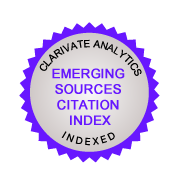Simple Weighted Average as an Alternative Method in Aggregating Students’ Academic Achievements
Keywords:
academic subject, academic achievement, student assessments, simple weighted averageAbstract
Purpose – It is a normal practice that students’ overall scores are computed by simple average (SA) method which considers all academic subjects as having the same weights or same degree of importance. This paper highlights the application of simple weighted average (SWA) as an alternative method in aggregating students’ academic achievements. The weights of the academic subjects must be determined prior to the use of SWA. Methodology – In a case study, a group of five teachers from one primary school was asked to rate five main subjects taught in primary schools according to their importance. These five teachers have taught the five subjects for more than six years. The obtained weights values were used to re-compute 2011 mid-semester final examination scores of 33 year-six pupils at the selected primary school. Findings – The teachers decided to give different weight to three subjects, but same weights to two subjects. Furthermore, the SWA scores give different ranking to the pupils as compared to the SA scores. Another sentence or two needed here to explain the findings. Significance – It is argued that the use of the SWA method is more suitable than the simple average method in finding the overall scores of students’ achievements. The SWA method considers the subjects to have different degrees of importance, as they do in the actual educational context.Additional Files
Published
26-12-2013
How to Cite
Mat Kasim, M., & Goh Abdullah, S. R. (2013). Simple Weighted Average as an Alternative Method in Aggregating Students’ Academic Achievements. Malaysian Journal of Learning and Instruction, 10, 119–132. Retrieved from https://e-journal.uum.edu.my/index.php/mjli/article/view/7654
Issue
Section
Articles
























